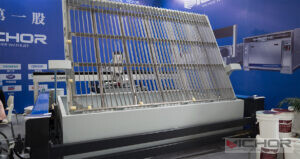
Water Jet Control Systems: Boosting Precision and Efficiency in Modern Industry
Imagine a tool that can slice through titanium, granite, or composite materials with the accuracy of a laser, yet without generating heat or causing material distortion. This is the power of a water jet control system, a technology that has transformed manufacturing and fabrication processes across various sectors. In industrial settings, precision and reliability are non-negotiable, and the water jet control system stands out as a cornerstone for achieving these goals. By leveraging high-pressure water streams, often mixed with abrasives, these systems enable intricate cuts and shapes that were once deemed impossible. This article will delve into the essential aspects of water jet control systems, from their fundamental workings to their real-world applications, providing a comprehensive understanding of why they are indispensable in today’s competitive landscape. Whether you’re involved in aerospace, automotive, or artisanal crafts, grasping the nuances of a water jet control system can unlock new levels of productivity and innovation.
What is a Water Jet Control System?
A water jet control system refers to the integrated set of components and software that manages the operation of water jet cutting machinery. At its core, this system regulates the flow, pressure, and direction of a high-velocity water stream, which can be pure or combined with abrasive materials to enhance cutting capabilities. The primary function of a water jet control system is to ensure precise material removal, enabling users to execute complex designs with minimal waste. Unlike traditional cutting methods that rely on heat or mechanical force, a water jet control system operates through kinetic energy, reducing the risk of thermal damage and extending tool life. This technology is highly versatile, adaptable to various materials including metals, ceramics, glass, and plastics. By incorporating advanced sensors and controllers, the water jet control system maintains consistency and accuracy, even in high-volume production environments. Its evolution from basic hydraulic mechanisms to sophisticated digital interfaces highlights its critical role in advancing manufacturing efficiency and sustainability.
How a Water Jet Control System Operates
The operation of a water jet control system begins with a high-pressure pump that intensifies water pressure to levels exceeding 60,000 psi. This pressurized water is then channeled through a narrow nozzle, creating a focused jet that travels at speeds up to three times the speed of sound. In abrasive water jet systems, a mixing chamber introduces garnet or other abrasives into the stream, amplifying its cutting power. The water jet control system employs computerized numerical control (CNC) technology to guide the nozzle along predefined paths, ensuring exact cuts based on digital designs. Key elements like pressure regulators, flow meters, and motion controllers work in tandem to adjust parameters in real-time, compensating for variables such as material thickness and density. For instance, the water jet control system might modulate pressure to prevent overcutting in delicate materials or optimize abrasive feed rates for harder substances. This dynamic responsiveness not only enhances precision but also minimizes energy consumption and operational costs. By integrating feedback loops and diagnostic tools, the water jet control system can detect anomalies like nozzle wear or pressure drops, prompting adjustments that maintain output quality. Overall, this seamless coordination of mechanical and electronic components defines the efficiency of a modern water jet control system.
Key Components of a Water Jet Control System
A robust water jet control system comprises several critical components that collectively ensure optimal performance. First, the high-pressure pump serves as the heart of the system, generating the necessary force to propel the water jet. These pumps are often intensifier-based or direct-drive, designed to sustain extreme pressures without faltering. Next, the nozzle assembly—including the orifice and focusing tube—shapes and directs the stream, with materials like sapphire or diamond used for durability. The abrasive delivery system, if applicable, stores and meters abrasives into the water stream, enhancing cutting efficiency for tough materials. The CNC controller is the brain of the water jet control system, interpreting design files and coordinating movements along multiple axes. It interfaces with servo motors and drives that position the cutting head with micron-level accuracy. Additionally, sensors and monitoring devices track pressure, flow rate, and temperature, feeding data back to the control unit for real-time adjustments. Software platforms within the water jet control system allow users to program cuts, simulate processes, and analyze performance metrics. Maintenance components, such as filters and seals, prevent contamination and wear, prolonging the system’s lifespan. Each part of the water jet control system must be meticulously engineered to withstand harsh conditions, ensuring reliability in demanding industrial applications. Understanding these components helps operators troubleshoot issues and optimize their water jet control system for specific tasks.
Applications of Water Jet Control Systems in Various Industries
The versatility of a water jet control system makes it invaluable across a wide range of industries. In aerospace, for example, these systems are used to cut lightweight alloys and composites for aircraft components, where precision and lack of heat-affected zones are critical to structural integrity. The automotive sector relies on water jet control systems for shaping body panels, gaskets, and interior parts, benefiting from the ability to handle diverse materials without tool changes. In architecture and construction, a water jet control system facilitates the creation of intricate tiles, stone countertops, and metal façades, enabling custom designs with smooth edges. The food industry employs pure water jet systems for portioning products like meat and pastries, as the process is sanitary and avoids contamination. Art and design professionals use water jet control systems to craft detailed sculptures and installations from materials like glass and wood, leveraging the technology’s flexibility. Even in medical device manufacturing, the water jet control system ensures precise cuts for implants and instruments, adhering to strict tolerances. This broad applicability stems from the system’s adaptability to different material properties and thicknesses, supported by the water jet control system’s ability to execute complex geometries with high repeatability. As industries evolve toward customization and sustainability, the demand for advanced water jet control systems continues to grow.
Advantages of Using a Water Jet Control System
Implementing a water jet control system offers numerous benefits that drive operational excellence. One of the primary advantages is the absence of heat generation during cutting, which eliminates thermal distortion and preserves material properties—a key factor in metals and composites. This cold-cutting process also reduces the need for secondary finishing, saving time and resources. The water jet control system supports omnidirectional cutting, allowing for intricate shapes and sharp corners without tool wear, unlike mechanical methods. Environmental friendliness is another plus, as water jet systems typically use water and natural abrasives, producing minimal hazardous waste and enabling recycling in closed-loop setups. From a cost perspective, a water jet control system lowers long-term expenses by reducing material waste through nested cutting patterns and minimizing energy consumption compared to laser or plasma alternatives. Safety is enhanced since there are no toxic fumes or radiation risks, making the water jet control system suitable for various workplace settings. Moreover, the scalability of these systems—from small workshops to large factories—ensures they can adapt to changing production demands. By integrating IoT capabilities, modern water jet control systems provide data analytics for predictive maintenance, further boosting uptime and productivity. These collective advantages make the water jet control system a smart investment for businesses aiming to enhance quality and competitiveness.
Maintenance and Optimization of Water Jet Control Systems
To maximize the lifespan and performance of a water jet control system, regular maintenance and optimization are essential. Routine checks should focus on the high-pressure components, such as inspecting seals and valves for leaks, which can compromise pressure integrity. The nozzle and abrasive delivery systems require cleaning and replacement to prevent clogs and ensure consistent stream quality. Monitoring water quality is crucial; using deionized water can reduce mineral buildup and extend pump life. Software updates for the CNC and control interfaces help incorporate new features and improve accuracy, while calibration of sensors and drives maintains alignment. Operators should track abrasive usage and pressure settings to optimize cutting parameters for different materials, reducing wear and tear. Predictive maintenance, enabled by the water jet control system’s diagnostic tools, can alert users to potential issues before they cause downtime. For instance, vibration analysis might detect pump imbalances early. Additionally, training personnel on proper operation and safety protocols enhances efficiency and reduces errors. By adhering to a structured maintenance schedule, businesses can ensure their water jet control system operates at peak efficiency, delivering reliable results over many years. This proactive approach not only cuts costs but also supports sustainable practices by minimizing resource waste.

Future Trends in Water Jet Control System Technology
The future of water jet control systems is poised for exciting advancements, driven by innovations in automation and sustainability. One emerging trend is the integration of artificial intelligence (AI) and machine learning, enabling the water jet control system to self-optimize cutting paths and parameters based on real-time data. This could lead to even greater precision and reduced human intervention. Another development is the use of greener technologies, such as water recycling systems and biodegradable abrasives, which align with global environmental standards. Enhanced connectivity through Industry 4.0 will allow water jet control systems to seamlessly communicate with other smart factory equipment, facilitating fully automated production lines. Improvements in nozzle design and pump efficiency may further increase cutting speeds and lower energy consumption, making the water jet control system more accessible to small and medium enterprises. Research into hybrid systems, combining water jets with lasers or ultrasound, could expand application possibilities. As materials science evolves, the water jet control system will likely adapt to handle advanced composites and nanomaterials with ease. These trends underscore the dynamic nature of water jet technology, ensuring that the water jet control system remains at the forefront of industrial innovation, capable of meeting future challenges head-on.
Frequently Asked Questions About Water Jet Control Systems
Q1: What materials can a water jet control system cut effectively?
A1: A water jet control system can cut a wide variety of materials, including metals like steel and aluminum, ceramics, glass, stone, plastics, and composites. The system’s versatility allows it to handle materials of different thicknesses and hardness levels, especially when configured with abrasive additives for tougher substances.
Q2: How does a water jet control system compare to laser cutting in terms of precision?
A2: While both systems offer high precision, a water jet control system excels in cutting heat-sensitive materials without thermal damage, whereas lasers can cause heat-affected zones. Water jets are also better for thicker materials and reflective surfaces, though lasers might be faster for thin metals. The choice depends on the specific application and material properties.
Q3: What are the common maintenance requirements for a water jet control system?
A3: Regular maintenance for a water jet control system includes checking and replacing nozzles and seals, cleaning filters, monitoring water quality, and calibrating the CNC components. Abrasive delivery systems need periodic inspection to prevent blockages, and software updates should be applied to ensure optimal performance.
Q4: Can a water jet control system be used for underwater cutting applications?
A4: Yes, specialized water jet control systems are designed for underwater use, such as in offshore industries or shipbuilding. These systems are engineered to operate in submerged conditions, maintaining pressure and control while minimizing environmental impact.
Q5: How energy-efficient is a typical water jet control system?
A5: A water jet control system is generally energy-efficient compared to thermal cutting methods, as it primarily uses water and abrasives without high energy demands for heating. Modern systems incorporate energy-saving features like variable speed drives and efficient pump designs, reducing overall power consumption while maintaining high output.
In conclusion, the water jet control system represents a pivotal innovation in industrial technology, offering unmatched precision, versatility, and sustainability. By understanding its components, applications, and maintenance needs, businesses can harness its full potential to stay ahead in a competitive market.
continue reading
Related Posts
- 2056 words10.3 min read
- 1738 words8.7 min read


